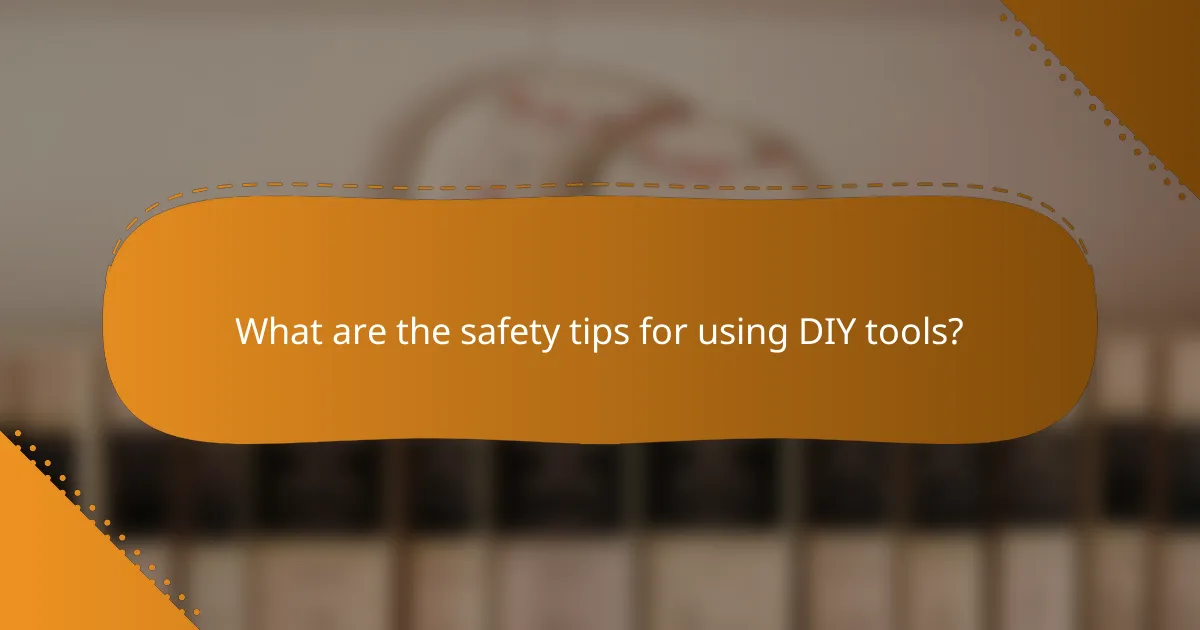Embarking on DIY home decor projects requires the right tools to ensure success and satisfaction. Essential equipment such as a power drill, measuring tape, and paint sprayer can significantly enhance your efficiency and precision. By selecting versatile and reliable tools, you can transform your creative ideas into reality while enjoying the process.

What tools are essential for DIY home decor projects?
Essential tools for DIY home decor projects include a power drill, paint sprayer, measuring tape, level, and utility knife. These tools help streamline the process, ensuring precision and efficiency in your creative endeavors.
Power drill
A power drill is crucial for various tasks, such as drilling holes and driving screws. When choosing a drill, consider the type (cordless or corded), battery life, and torque settings, which can affect performance on different materials.
For most home decor projects, a cordless drill with a battery life of at least 20-30 minutes is ideal. Look for a model that includes multiple drill bits for versatility, allowing you to tackle wood, drywall, and metal with ease.
Paint sprayer
A paint sprayer can significantly speed up the painting process and provide a smooth finish. When selecting a sprayer, consider the type (airless or HVLP) based on your project size and detail requirements.
For larger areas, an airless sprayer is efficient, while an HVLP sprayer offers precision for intricate designs. Always practice on a scrap piece before starting your project to ensure you achieve the desired coverage and finish.
Measuring tape
A measuring tape is essential for accurate measurements, ensuring that your decor fits perfectly in your space. Look for a tape that extends at least 25 feet for most home projects, with clear markings for both metric and imperial units.
When measuring, always double-check your dimensions and consider using a pencil to mark key points. This practice helps avoid costly mistakes and ensures a more polished final result.
Level
A level is vital for ensuring that shelves, frames, and other decor items are straight. A standard bubble level is effective, but digital levels can offer more precision and additional features.
For best results, use the level on multiple surfaces before installation. This step helps confirm that your items are not only aligned but also stable, preventing future adjustments.
Utility knife
A utility knife is a versatile tool for cutting various materials, including cardboard, fabric, and even thin wood. Choose a knife with a retractable blade for safety and ease of use.
When using a utility knife, always cut away from your body and use a cutting mat to protect surfaces. Keep blades sharp for cleaner cuts and replace them regularly to maintain efficiency and safety.

How to choose the right tools for home decor?
Choosing the right tools for home decor projects involves understanding the specific needs of your tasks and selecting equipment that fits those requirements. Prioritize versatility, quality, and safety to ensure successful and enjoyable DIY experiences.
Assess project requirements
Start by identifying the type of home decor project you plan to undertake, such as painting, woodworking, or textile crafting. Each project will require different tools; for instance, painting may need brushes, rollers, and drop cloths, while woodworking might necessitate saws, drills, and sanders.
Consider the scale and complexity of your project. Smaller tasks may only need basic tools like scissors and glue, while larger renovations could require power tools and safety gear. Make a checklist of necessary tools to avoid last-minute purchases.
Consider budget constraints
Your budget will significantly influence your tool selection. High-quality tools can be an investment, but they often last longer and perform better. Set a realistic budget range based on your project needs, typically anywhere from a few dozen to several hundred dollars.
Look for tools that offer good value, such as multi-tools or kits that include several essential items. Consider borrowing or renting tools for one-time projects to save costs. Avoid buying the cheapest options, as they may not provide the durability or performance you need.

What are the best brands for DIY tools?
When selecting tools for DIY home decor projects, several brands stand out for their quality, reliability, and user-friendly features. DeWalt, Ryobi, and Makita are among the top choices, each offering a range of products suited for various tasks and budgets.
DeWalt
DeWalt is renowned for its durable and high-performance tools, making it a favorite among both professionals and DIY enthusiasts. Their products often feature advanced technology, such as brushless motors and ergonomic designs, which enhance efficiency and comfort during use.
Commonly used DeWalt tools include drills, saws, and sanders, which are ideal for a variety of home decor projects. Prices typically range from $50 to several hundred dollars, depending on the tool type and features.
Ryobi
Ryobi is well-known for offering a wide selection of affordable tools that do not compromise on quality. Their products are particularly popular among DIYers due to their versatility and compatibility with the One+ battery system, allowing users to interchange batteries across different tools.
Ryobi tools are perfect for home decor tasks like painting, drilling, and cutting, with prices generally ranging from $30 to $200. This makes them accessible for those on a budget while still providing reliable performance.
Makita
Makita is celebrated for its innovation and high-quality construction, making it a preferred choice for serious DIYers. Their tools often come equipped with features designed for precision and ease of use, such as laser guides and variable speed settings.
Popular Makita tools include impact drivers, circular saws, and routers, which are essential for detailed home decor projects. Prices usually range from $60 to over $300, reflecting their robust build and advanced technology.

How to maintain DIY tools?
Maintaining DIY tools is essential for ensuring their longevity and performance. Regular upkeep can prevent rust, wear, and malfunction, saving you time and money in the long run.
Regular cleaning
Cleaning your tools after each use is crucial for maintaining their functionality. Remove dirt, dust, and debris with a soft brush or cloth, and for stubborn grime, use mild soap and water. Avoid harsh chemicals that can damage finishes or components.
For power tools, ensure that you blow out dust from vents and crevices using compressed air. This practice helps prevent overheating and extends the life of the motor.
Proper storage
Storing your tools correctly is key to preventing damage and ensuring easy access. Keep hand tools in a dry, cool place, ideally in a toolbox or on a pegboard to avoid clutter. For power tools, use their original cases or designated storage racks.
Consider using silica gel packets or a dehumidifier in your storage area to minimize moisture, which can lead to rust. Regularly check your storage conditions to ensure they remain optimal for your tools.

What are the safety tips for using DIY tools?
When using DIY tools, prioritize safety by wearing appropriate protective gear and adhering to manufacturer instructions. These practices help prevent accidents and ensure effective use of the tools.
Wear protective gear
Always wear safety goggles to protect your eyes from debris and dust when working with power tools or cutting materials. Additionally, consider using gloves to prevent cuts and abrasions, and ear protection if you are using loud machinery.
Footwear is also crucial; sturdy, closed-toe shoes can protect your feet from heavy items that may fall. A dust mask may be necessary when sanding or working with materials that generate fine particles.
Follow manufacturer instructions
Each tool comes with specific guidelines that detail safe operation and maintenance. Read the manual thoroughly before using any equipment to understand its features and limitations.
Pay attention to recommended settings and safety features, such as blade guards or safety switches. Ignoring these instructions can lead to misuse and increase the risk of injury.

What are the benefits of using quality tools?
Using quality tools in DIY home decor projects enhances both the experience and the outcome. High-quality tools are typically more durable, reliable, and efficient, leading to better results and less frustration during the process.
Increased efficiency
Quality tools significantly increase efficiency by allowing you to complete tasks faster and with less effort. For instance, a sharp saw will cut through wood more quickly than a dull one, reducing the time spent on each project.
Moreover, well-designed tools often require fewer adjustments and repairs, enabling you to focus on your creative vision rather than troubleshooting. Investing in tools that are ergonomically designed can also minimize fatigue, allowing for longer work sessions without discomfort.
To maximize efficiency, consider creating a checklist of essential tools for your projects. This can include items like a reliable drill, a sturdy level, and a versatile measuring tape. Having the right tools on hand can streamline your workflow and enhance your overall productivity.


